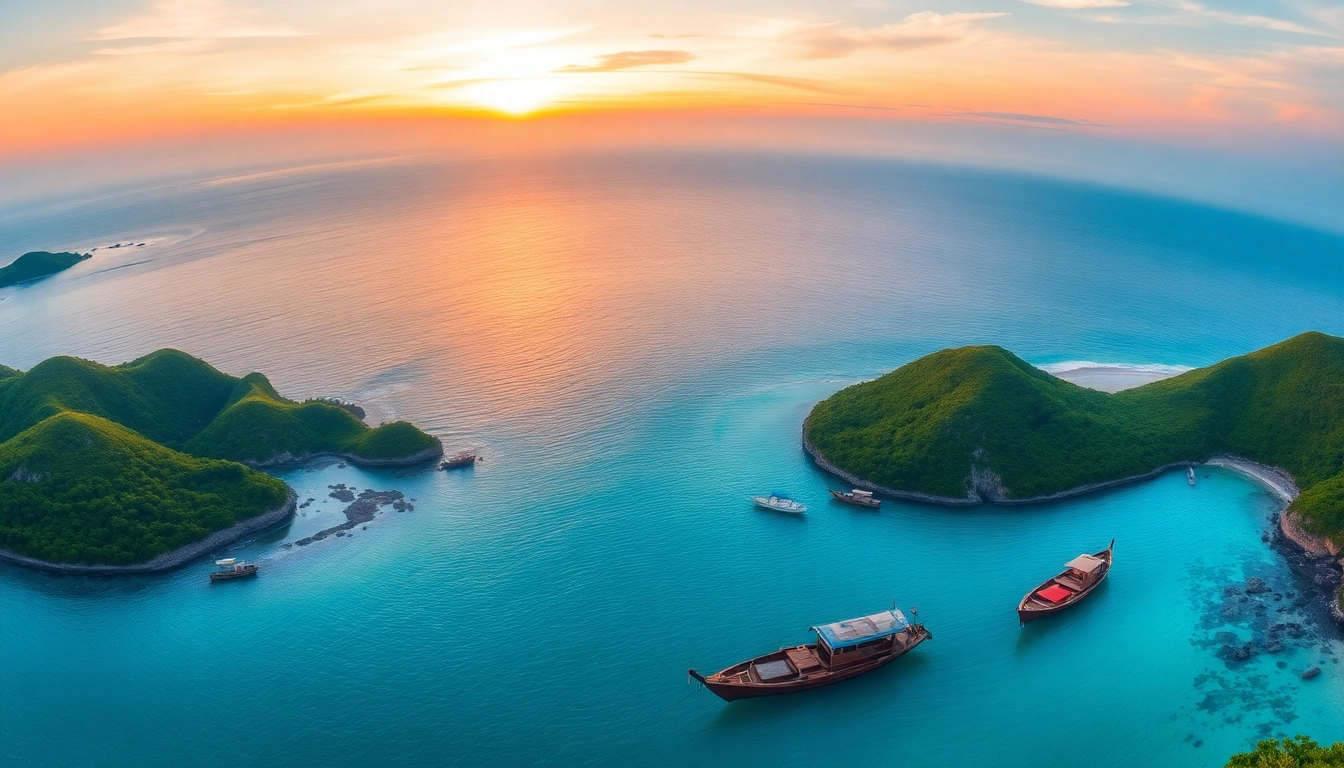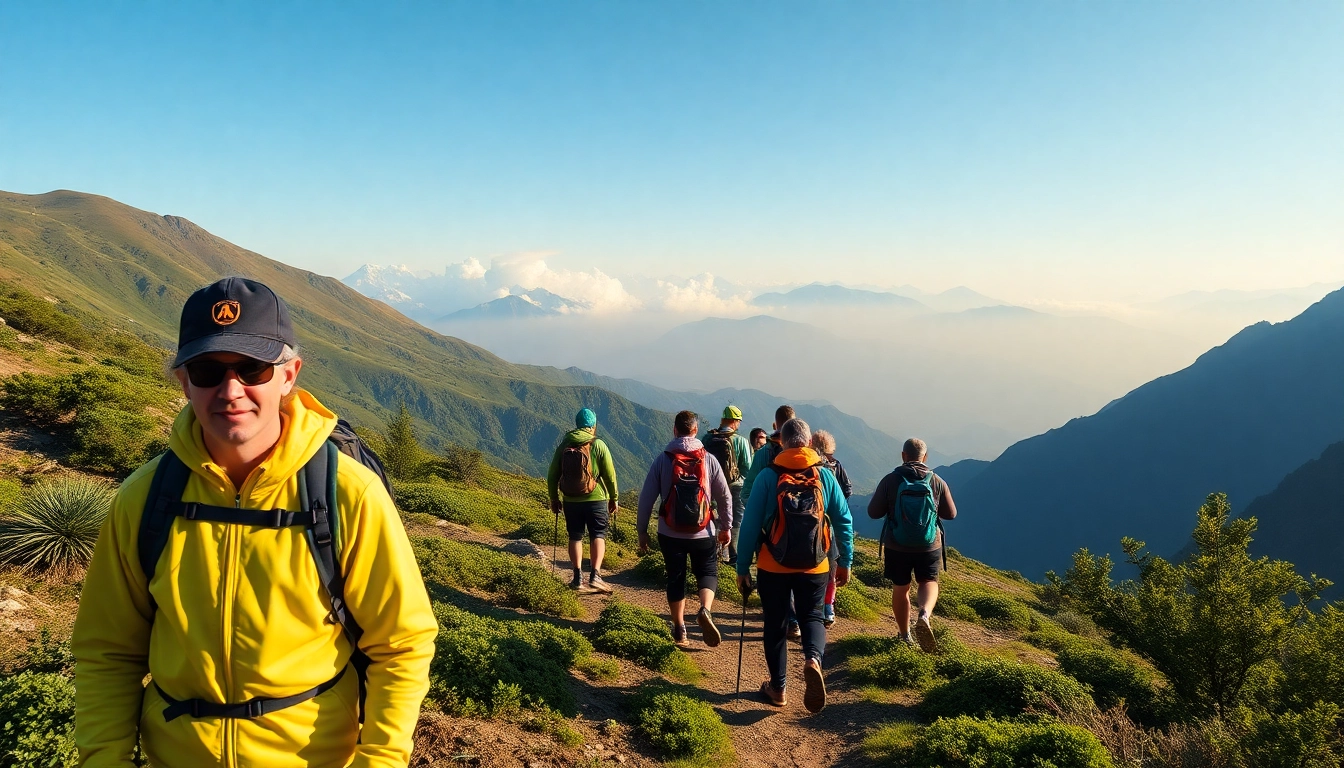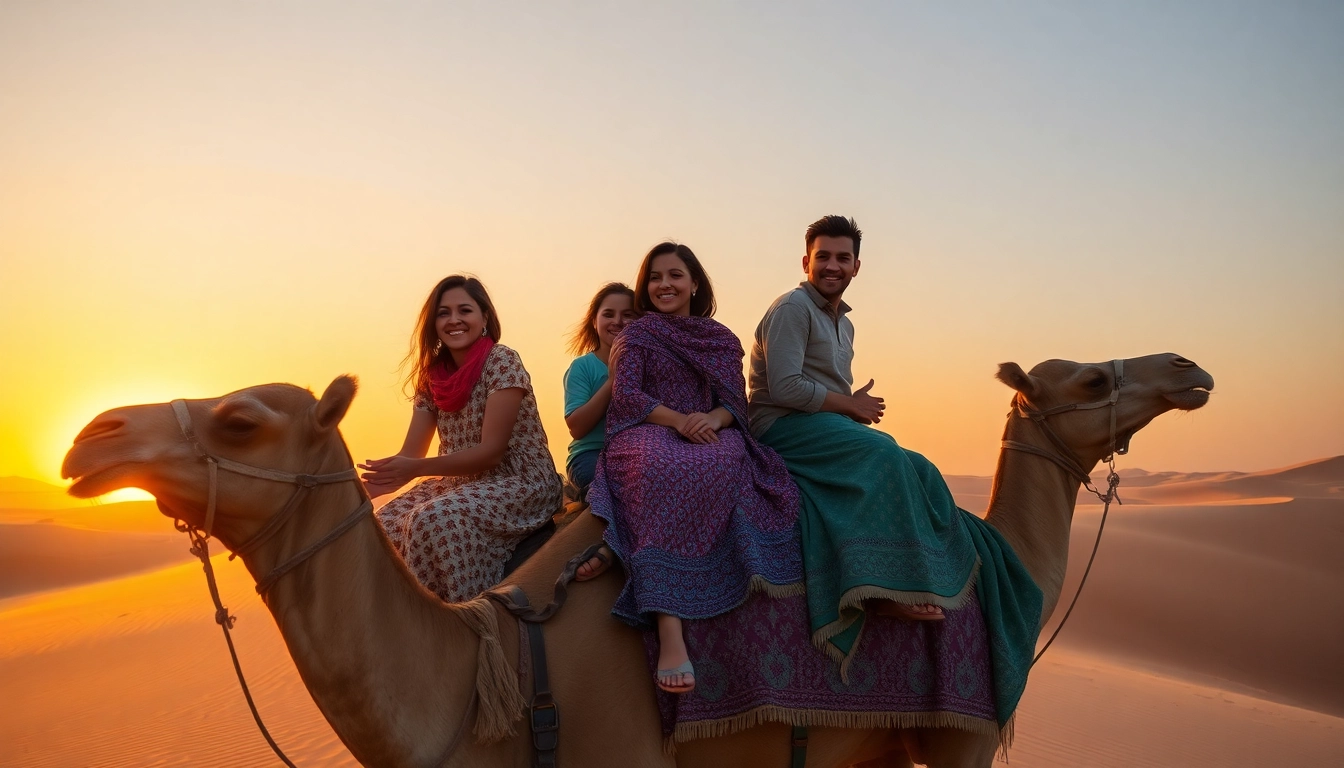Experience Authentic Lombok: A Guide to the Island’s Natural Wonders and Culture
Introduction to Lombok: Indonesia’s Hidden Paradise
Nestled in the heart of Indonesia’s Lesser Sunda Islands, Lombok is rapidly gaining recognition as an exotic yet accessible destination for travelers seeking natural beauty, rich culture, and adventure. With its breathtaking landscapes, vibrant traditions, and diverse attractions, Lombok offers an authentic Indonesian experience that appeals to nature lovers, history enthusiasts, and thrill-seekers alike. Despite its rising popularity, Lombok remains less commercialized than its famous neighbor Bali, allowing visitors to explore unspoiled beaches, active volcanoes, and traditional villages in a more tranquil setting. This comprehensive guide aims to shed light on every aspect of Lombok — from its geographical marvels and cultural heritage to practical travel tips — equipping travelers with everything they need to discover this Indonesian paradise.
Geographical Overview of Lombok
Lombok, covering approximately 4,700 square kilometers, is situated east of Bali and west of Sumbawa in Indonesia’s vast archipelago. It forms part of the provincial entity of West Nusa Tenggara (Nusa Tenggara Barat, NTB). The island is characterized by a diverse topography, ranging from lush inland valleys and terraced rice paddies to rugged mountains and pristine beaches. The island is bordered by the Lombok Strait to the south, which separates it from Bali’s neighboring islands, and the Alas Strait to the east, separating it from Sumbawa.
One of Lombok’s defining features is Mount Rinjani, the second-highest volcano in Indonesia, standing at 3,726 meters. This active volcano dominates the landscape and provides a striking backdrop for the island’s northern regions. The island’s coastline is dotted with white-sand beaches and coral reefs, making it a haven for water activities. The climate is tropical, with a distinct wet season from November to March and a drier period from April to October, making it essential for travelers to plan their visit accordingly.
Geographically, Lombok’s islands are divided into several administrative regions, including Lombok Barat (West Lombok), Lombok Tengah (Central Lombok), Lombok Timur (East Lombok), and Lombok Utara (North Lombok). Each region offers unique attractions and cultural experiences, reflecting the island’s multifaceted character.
Historical and Cultural Context
Lombok’s history is deeply intertwined with indigenous traditions, trade routes, and colonial influences. The original inhabitants, the Sasak people, have maintained their rich cultural heritage for centuries. Their society is rooted in agrarian practices, craftsmanship, and unique religious traditions, primarily based on Islam, mixed with local animist beliefs.
Historically, Lombok was a vital hub for trade, especially in spices, textiles, and crafts. The island’s strategic location in the Nusantara archipelago facilitated interactions with traders from India, China, and other parts of Southeast Asia. Colonial powers, including the Dutch and the Portuguese, attempted to establish control over Lombok, leaving marks on its architecture, political structures, and cultural practices.
Today, Lombok’s cultural identity is prominently expressed through its traditional villages, handicrafts, and festivals. The island’s society remains resilient in preserving ancient arts like weaving, pottery, and woodcarving, which are showcased in local markets and artisan workshops. Notably, the Sasak community’s traditional architecture, with distinctive thatched roofs and intricate carvings, provides a glimpse into their ancestral roots.
Religious festivals, such as the Islamic Eid al-Fitr celebrations and unique local ceremonies like the Bau Nyale (sea worm fishing festival), offer immersive experiences that reveal Lombok’s spiritual heritage. These events often include traditional dance, music, and culinary delights that reflect the island’s vibrant cultural tapestry.
Current Tourism Trends on the Island
In recent years, Lombok has emerged as a preferred destination for eco-tourism, adventure travel, and cultural exploration. While Bali still dominates the Indonesian tourism map, Lombok has carved out its niche among travelers seeking less crowded, more authentic experiences. The island’s natural attractions and cultural richness attract diverse demographics, from young backpackers to luxury travelers.
One key trend is the growing popularity of sustainable tourism initiatives aimed at preserving Lombok’s environment and cultural integrity. Many local communities have adopted eco-friendly practices, promoting responsible travel, and supporting local artisans and farmers. Resorts and tour operators increasingly offer eco-conscious accommodations and activities, aligning economic growth with conservation efforts.
Adventure tourism is booming, driven by Mount Rinjani treks, surfing expeditions at Gili Islands, and snorkeling trips in vibrant coral reefs. Wellness tourism is also gaining traction, with yoga retreats and spa resorts thriving amidst scenic landscapes.
Social media platforms, notably Instagram, have significantly influenced Lombok’s visibility. Destinations like Tanjung Aan beach, the waterfalls of Sendang Gile, and the vibrant Gili Islands are now must-visit spots showcased globally. This digital exposure has created a surge in international visitors, particularly from Australia, Europe, and North America, seeking an off-the-beaten-path Indonesian escape.
Top Natural Attractions in Lombok
Mount Rinjani: Indonesia’s Second Highest Volcano
Mount Rinjani, towering at 3,726 meters, is not only a symbol of Lombok but also one of the most challenging and rewarding treks in Southeast Asia. The Rinjani trek attracts experienced hikers and novices alike, offering spectacular views, volcanic craters, and hot springs. The trek usually spans 2–4 days, with nights spent in designated camping sites or traditional villages.
Ascending Rinjani requires careful preparation. Guides and permits are mandatory, and proper gear is essential. The altitude and unpredictable weather demand physical fitness and acclimatization. The Taman Nasional Gunung Rinjani (Rinjani National Park) protects the area’s unique flora and fauna, including the endangered Sumatran eagle and Rinjani scops owl. Visitors are encouraged to adhere to park regulations to help preserve this natural wonder.
Stunning Beaches and Surfing Spots
Lombok’s beaches are renowned for their pristine white sands, crystal-clear waters, and excellent surfing conditions. Senggigi Beach, located on the island’s west coast, offers stunning sunsets and a vibrant nightlife scene. Further east, the Gili Islands — Gili Trawangan, Gili Air, and Gili Meno — are world-famous for their underwater beauty, lively bars, and relaxed atmosphere.
Surfing hotspots like Desert Point, Gerupuk, and Mawi are sought after by surfers from around the globe. These locations feature consistent waves suitable for beginners and advanced surfers. Access is straightforward, with many surf schools providing lessons and equipment rentals. The beaches are also ideal for snorkeling, paddleboarding, and beach lounging, making Lombok a versatile seaside destination.
Unique Waterfalls and Limestone Caves
Eco-adventures in Lombok extend to hidden waterfalls such as Sendang Gile and Tiu Kelep, nestled in the Mount Rinjani foothills. These cool, cascading waterfalls are accessible via well-marked trekking paths, offering invigorating experiences amid lush jungle surroundings. Nearby, the Sekucek Cave presents an intriguing limestone formation, ancient stalactites, and stalagmites, appealing to spelunkers and nature explorers.
These natural landmarks highlight Lombok’s diverse landscape and emphasize eco-tourism’s importance, encouraging visitors to embrace responsible tourism practices that safeguard these fragile ecosystems.
Discovering Lombok’s Cultural Heritage
Traditional Sasak Villages and Crafts
The Sasak people, the native inhabitants of Lombok, are renowned for their artisan skills and traditional lifestyle. Visiting villages such as Sade and Sukarara provides insight into their unique culture. In Sade, visitors can observe traditional weaving techniques, where intricate ikat textiles are produced using age-old methods. Sukarara is famous for its woven fabric, which is often used in ceremonial dress and daily wear.
Handicrafts such as pottery, woodcarving, and blacksmithing continue to thrive in these villages, serving both cultural preservation and livelihood. Many artisans welcome visitors, offering hands-on experiences and the opportunity to purchase authentic souvenirs directly from the makers.
Local Festivals and Religious Celebrations
Lombok’s calendar is punctuated with festivals and ceremonies that showcase its cultural richness. The Bau Nyale Festival, held annually around February, involves catching sea worms (nyale) believed to symbolize prosperity. Locals and tourists gather on beaches to participate in this colorful event, which includes traditional dances, music, and beachside feasts.
Islamic festivals like Eid al-Fitr and Eid al-Adha are observed with communal prayers, feasting, and cultural performances. Additionally, village-specific rituals, such as the Tabuik festival in Mataram, reflect the diverse spiritual practices flowing through Lombok’s society.
Gastronomy and Culinary Delights
Lombok’s cuisine is a savory reflection of its cultural influences and natural resources. Signature dishes include Ayam Taliwang, spicy grilled chicken seasoned with chili and garlic, and Plecing Kangkung, a simple yet flavorful water spinach salad served with fiery sambal. Seafood plays a prominent role, with fresh catches grilled or cooked in rich coconut sauces.
Traditional markets and warungs offer local delicacies such as Sate Rinjani, fried banana chips, and sweet coconut pancakes. Visitors are encouraged to try these authentic flavors, supporting local farmers and vendors while gaining a deeper understanding of Lombok’s culinary heritage.
Best Activities and Adventures in Lombok
Hiking and Trekking Expeditions
Beyond Mount Rinjani, Lombok offers numerous trekking routes catering to various skill levels. The Sembalun Valley presents gentle trails through terraced rice fields and volcanic landscapes, ideal for beginners. More adventurous hikers can explore the scenic trails around Mount Sambelia or venture into the remote forests of Mount Passot for panoramic vistas.
Guided tours, safety equipment, and ecological awareness are paramount for a successful trekking experience. Such expeditions contribute to sustainable tourism by empowering local guides and conservation projects.
Snorkeling and Diving Paradise
The Gili Islands are Lombok’s crown jewels for underwater exploration. They boast vibrant coral reefs teeming with marine life, including turtles, reef sharks, and countless species of tropical fish. Dive operators offer excursions for all levels, from introductory snorkeling trips to advanced scuba dives exploring underwater caves and drop-offs.
Other notable spots include the Sekotong Peninsula and the coastal areas near Kuta, where calm waters and coral gardens provide excellent snorkeling experiences. Proper coral reef preservation practices and eco-friendly snorkeling gear are encouraged to maintain these ecosystems for future generations.
Eco-Tourism and Sustainable Travel Options
With growing awareness around environmental impact, Lombok is increasingly embracing eco-tourism initiatives. Visitors can participate in conservation programs, tree planting activities, and community-based tourism projects that promote cultural exchange and sustainable development. Responsible travelers should choose eco-lodges, support local artisans, and adhere to guidelines that minimize ecological footprints.
Connecting with local NGOs and community groups can enhance understanding of sustainable practices, ensuring tourism benefits both visitors and the indigenous communities.
Planning Your Visit to Lombok
Travel Tips and Best Time to Visit
The ideal visiting period is during the dry season from April to October, when the weather is sunny and perfect for outdoor activities. The wet season (November to March) can bring heavy rains, especially affecting trekking and sea trips, so planning accordingly is advisable.
Travel logistics include flying into Lombok International Airport (Bandara Internasional Lombok) from major hubs such as Jakarta, Bali, and international gateways. Alternatively, ferries connect Bali’s Padang Bai harbor to Lombok, providing scenic approaches to the island.
It’s beneficial to learn some basic Indonesian phrases, respect local customs, and dress modestly when visiting villages and religious sites. Currency exchange and mobile connectivity should also be arranged before departure.
Accommodation and Transportation Guides
Lombok boasts a range of accommodations, from luxury resorts and boutique hotels to budget guesthouses and eco-lodges. Popular areas such as Senggigi, Kuta, and the Gili Islands provide convenient access to beaches, restaurants, and tour services.
Transportation options include rental scooters, private drivers, and local taxis. For longer distances, intercity buses and private car hires are recommended. Navigating Lombok’s versatile terrain requires awareness of road conditions, especially in rural and mountain regions.
Safety and Cultural Etiquette
Safety precautions include staying updated on local weather conditions, especially during rainy seasons, and following guidelines for mountain trekking or water activities. Respect for local customs, such as modest dress and polite behavior, enhances interactions with communities.
Religious sites require appropriate attire, and showing appreciation for local traditions fosters goodwill. Carrying a basic first aid kit and emergency contacts ensures preparedness for unforeseen incidents.



